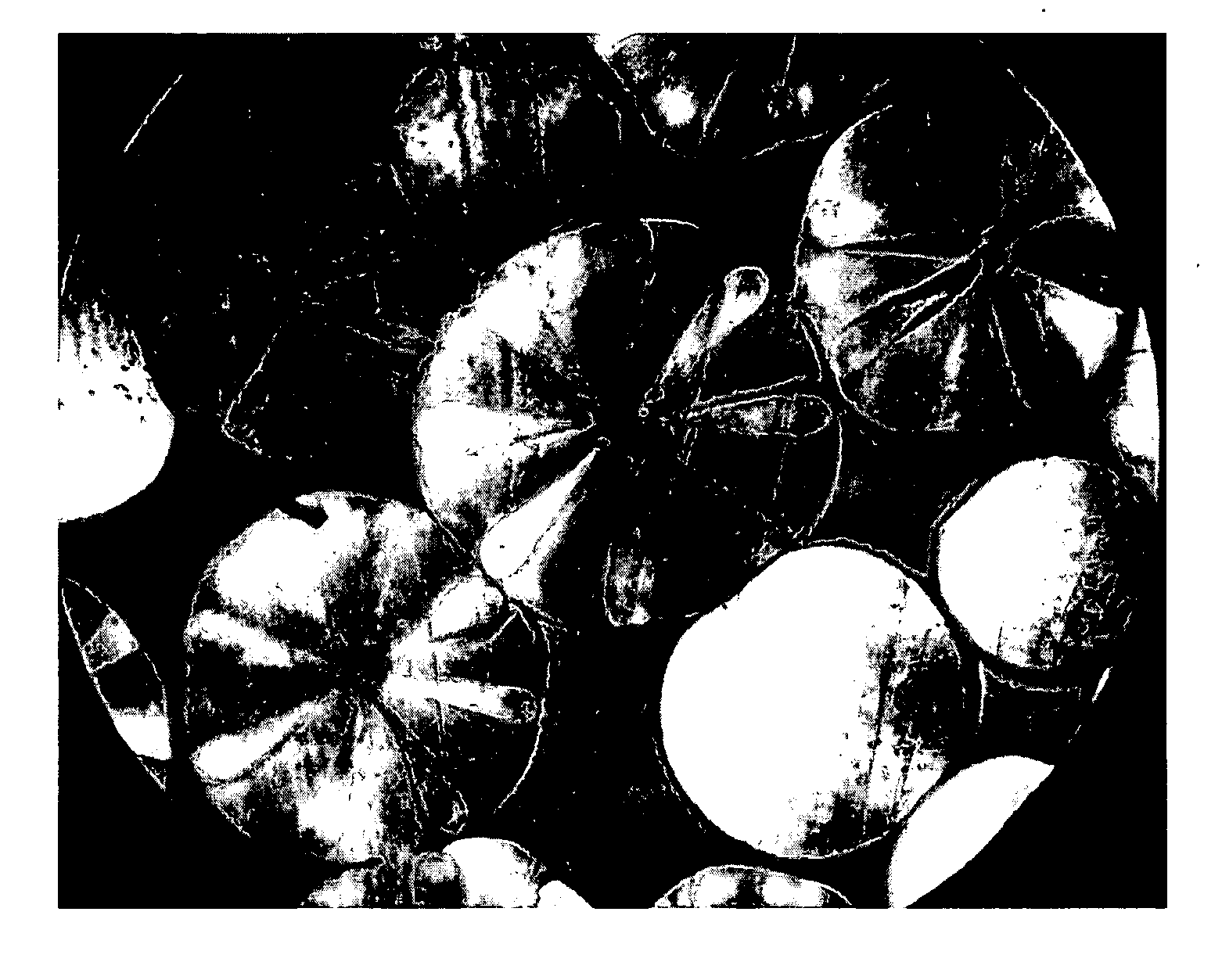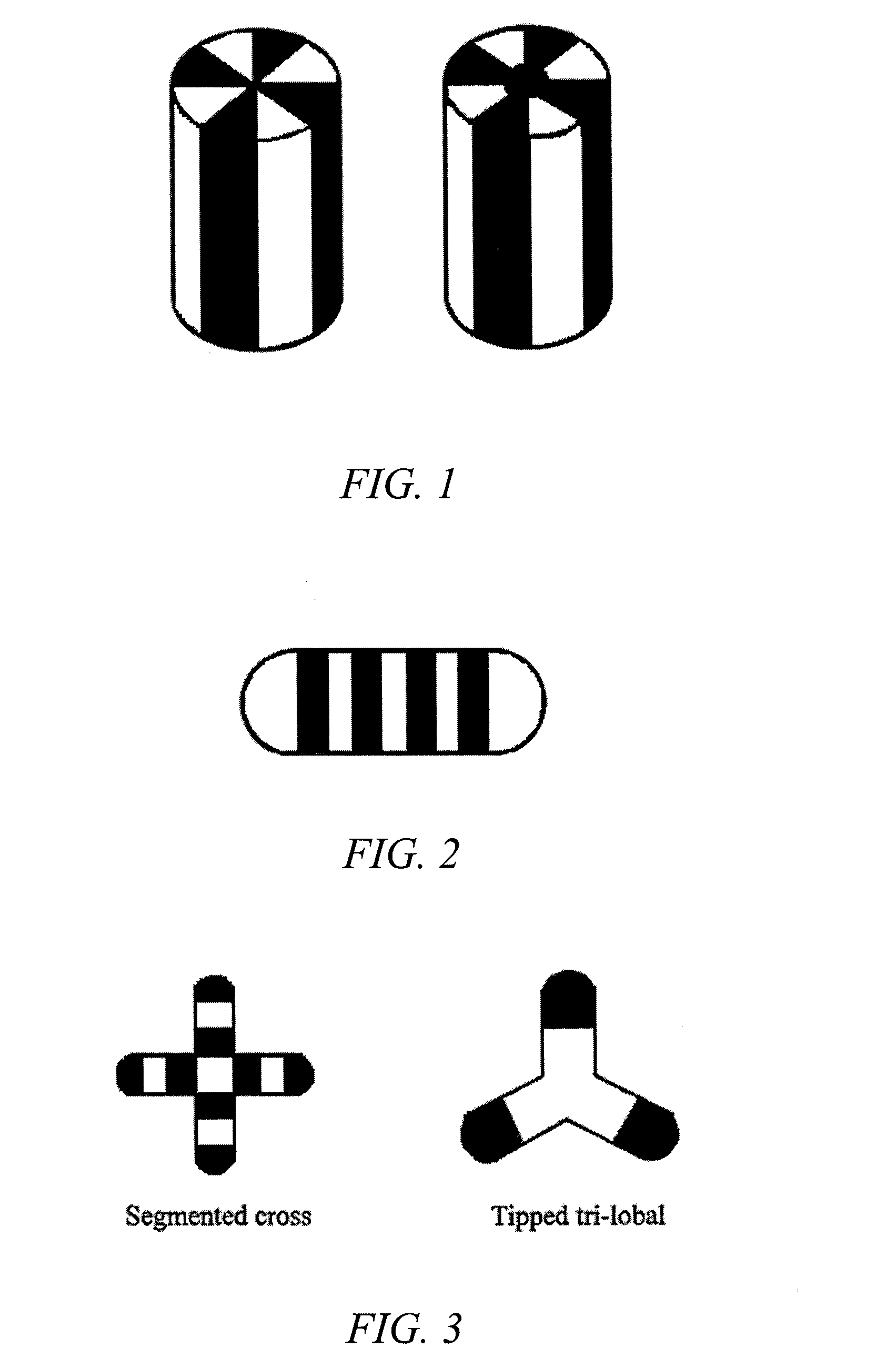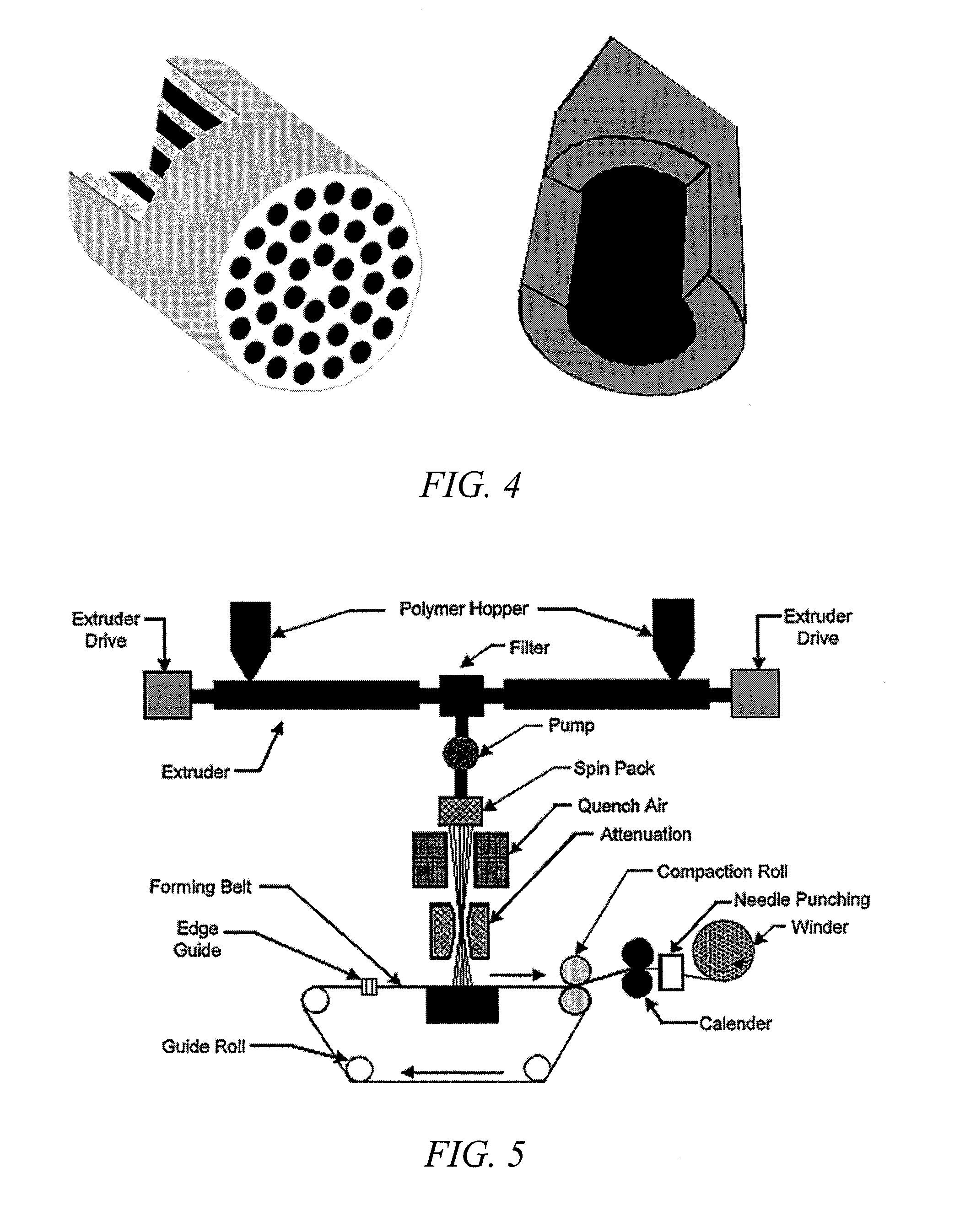Mixed fibers and nonwoven fabrics made from the same
a technology of mixed fibers and nonwoven fabrics, which is applied in the direction of weaving, manufacturing tools, melt spinning methods, etc., can solve the problems of continuous fibers suffering defects during manufacturing, unsuitable filaments for further processing, and unsatisfactory entanglement, so as to improve flexibility, filtration and thermal properties, and breathability. the effect of resilien
- Summary
- Abstract
- Description
- Claims
- Application Information
AI Technical Summary
Benefits of technology
Problems solved by technology
Method used
Image
Examples
example 1
Fabrics Prepared using Segmented Pie Bicomponent Fiber and Monocomponent Fiber with Mixed-Alternate Spin-Pack Design
[0139]Nonwoven fabrics were prepared using pie / wedge bicomponent fibers having 16 segments per fiber combined with monocomponent fibers. Fabrics that were subjected to hydroentangling were prepared using polyamide 6 (PA6) and polylactic acid (PLA) in defined ratios. Fabrics that were subjected to calendaring were prepared using polyamide 6 (PA6) and polyethylene (PE) in defined ratios. In each case, the monocomponent filaments and the bicomponent filaments were extruded through the same spinneret having the pattern shown in FIG. 7, wherein the open circles represent the orifices for spinning of monocomponent filaments, and the divided circles represent the orifices for spinning of bicomponent filaments. This design is referred to as a mixed-alternate spin-pack design.
[0140]Each fabric was formed to have a weight basis of 100 gsm and either hydroentangled or calendared....
example 2
Fabrics Prepared using Segmented Pie Bicomponent Fiber and Monocomponent Fiber with Row-Mixed Spin-Pack Design
[0141]Nonwoven fabrics were prepared using pie / wedge bicomponent fibers having 16 segments per fiber combined with monocomponent fibers. Fabrics were subjected to hydroentangling and were prepared using either PA6 and PLA in defined ratios or polyethylene terephthalate (PET) and PA6 in defined ratios. In each case, the monocomponent filaments and the bicomponent filaments were extruded through the same spinneret having a pattern as illustrated in FIG. 17, wherein the open circles represent the orifices for spinning of monocomponent filaments, and the divided circles represent the orifices for spinning of bicomponent filaments. This design is referred to as a row-mixed spin-pack design.
[0142]Each fabric was formed to have a weight basis of 100 gsm and was tested for grab tensile strength, tongue tear strength, and trapezoidal tear strength using the methods described herein. ...
example 3
Fabrics Prepared using Islands in the Sea Bicomponent Fiber and Monocomponent Fiber with Row-Mixed Spin-Pack Design
[0143]Nonwoven fabrics were prepared using islands in the sea bicomponent fibers having 7 islands per fiber combined with monocomponent fibers. Fabrics were subjected to hydroentangling or calendaring and were prepared using: defined ratios of PET and PA6; defined ratios of PET and PLA; or defined ratios of PET and PE. In each case, the monocomponent filaments and the bicomponent filaments were extruded through the same spinneret having a row-mixed spin-pack design, as illustrated in FIG. 17.
[0144]Each fabric was formed to have a weight basis of 100 gsm and either hydroentangled or calendared. The fabrics were then tested for grab tensile strength, tongue tear strength, and trapezoidal tear strength using the methods described herein. The specific polymer compositions for each fabric, the treatment, and the tested properties are shown below in Tables 7, 8, 9, and 10. Th...
PUM
| Property | Measurement | Unit |
|---|---|---|
| diameter | aaaaa | aaaaa |
| diameter | aaaaa | aaaaa |
| diameter | aaaaa | aaaaa |
Abstract
Description
Claims
Application Information
 Login to View More
Login to View More - R&D
- Intellectual Property
- Life Sciences
- Materials
- Tech Scout
- Unparalleled Data Quality
- Higher Quality Content
- 60% Fewer Hallucinations
Browse by: Latest US Patents, China's latest patents, Technical Efficacy Thesaurus, Application Domain, Technology Topic, Popular Technical Reports.
© 2025 PatSnap. All rights reserved.Legal|Privacy policy|Modern Slavery Act Transparency Statement|Sitemap|About US| Contact US: help@patsnap.com



